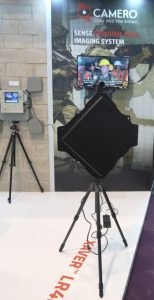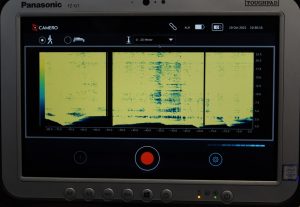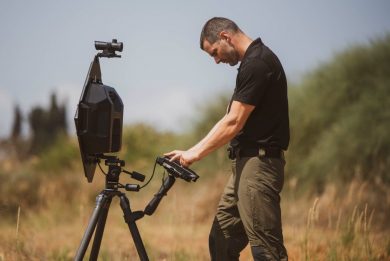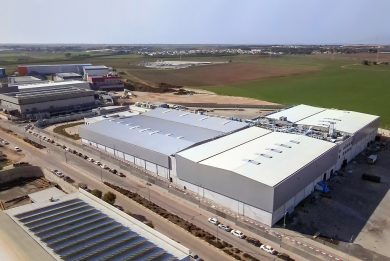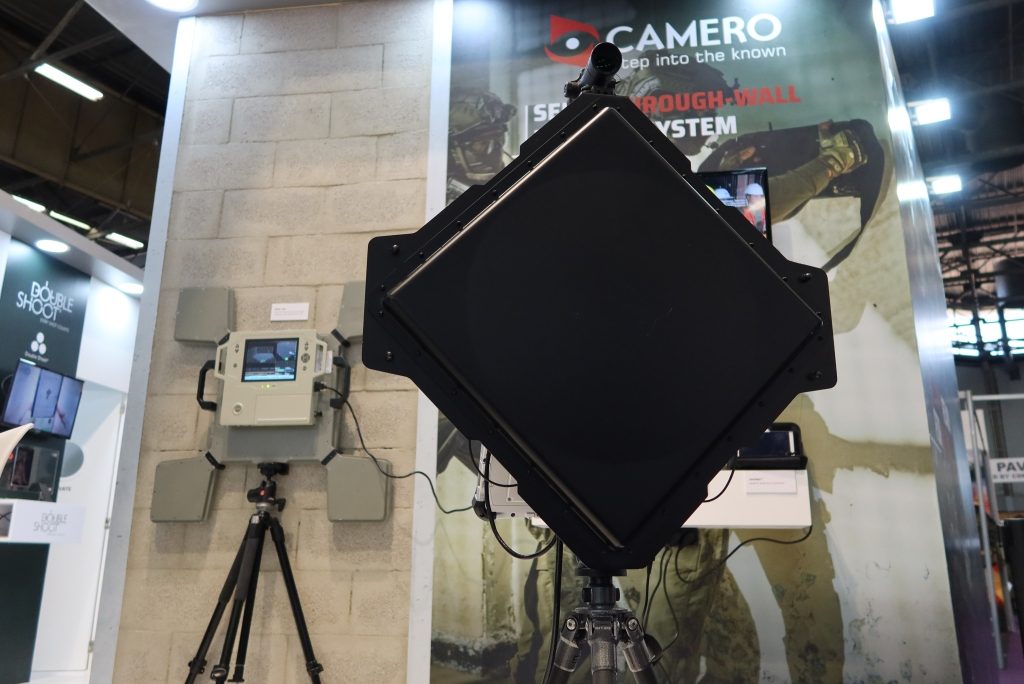
XLR-40: an urban long-range sense-through-the-wall radar from Camero
By Paolo Valpolini
Camero is definitely a benchmark in sense-through-the-wall solutions, its Xaver radars being in service with many military, security and rescue services worldwide. The first systems developed, Xaver 800, Xaver 400 and Xaver 100, are systems that must be used relatively closed to the wall behind which we want to “see”, providing from 3D full imaging in the resolution of body parts to detecting, locating and tracking only, depending on size and weight. In early 2021 the company introduced a new system, the Xaver Long-Range 80, XLR-80 in short, that allowed to understand if there are any human beings in a building, if and how they were moving inside, from a standoff distance of over 100 meters. With a weight of nearly 20 kg, the XLR-80 is the “bigger brother” in the new Camero Long Range family, and has already been sold and is in use by some customers; asked if the users are mostly “black” or “green” the company declined giving details on the type of customers, which must however be definitely military or security entities.
For operating in urban areas, a lighter and smaller system had to be developed, Amir Beeri, Camero CEO, explained to EDR On-Line a few days before the opening of Milipol. “Our new XLR-40 can be used at more than 50 meters away from the building, which is plenty enough to cope with urban scenarios,” he told us.
With about half the range, the XLR-40 weight was also cut nearly by half, , while the antenna surface is around one quarter that of the XLR-80.
“In order to cover the dimensions of a room at 50 meters distance we had to adopt a wider beam, that of the XLR-40 being around 10° while the XLR-80 has a 5° beamwidth,” Amir Beeri explained, the 10° angle providing a spot size of over 8 meters at 50 meters distance. The two internal batteries ensure the same operation time of the bigger radar, 7 hours, the recording time being also identical, 12 hours. “We adopted exactly the same technology, both long range radars operating in the 3-5 GHz frequencies, therefore we obtain similar performances, with range accuracy being around 30 cm and resolution around 10 cm, which allows discriminating people inside a building to understand how many humans are present in a room,” the CEO says. The XLR-40, as its bigger brother, does not provide a 3D image of the inside of the building, but allows understanding if there is more than one room in depth as well as people behaviour, if a subject is static or moving, and in the latter case if he or she moves towards the sensor or away from it.
The Man-Machine Interface remains that of the XLR-80 and is based on a ruggedised tablet computer with a 10-inch screen loaded with the Camero dedicated software. Two levels of sensitivity can be used, high-sensitivity to identify static persons and low-sensitivity for moving people, an icon with a person lying on a bed or standing showing the working mode. On the screen a line moves from right to left, which becomes yellow when a person is identified, remaining straight if the person does not move, bending down if she approaches the sensor or up if she gets away from it, the Y-axis representing distance between the individual and the sensor while the X-axis is for time (having been taken at Milipol, the screen picture is not representatiive as too many targets were walking in front of the antenna). To operate the XLR-40 it is sufficient to rig up the tripod, install the radar and tablet, connect them, and aim the system towards the target using the Meprolight x4 optical side also used on the XLR-80.
The development of the Xaver LR-40 was led by lessons leaned from customers, the XLR-80 and XLR-40 combination covering the most common operational needs. “For the time being we are not thinking of a longer range version,” Amir Beeri concludes, explaining that for shorter distances the usual Xaver systems can cover the need, as they can operate up to 20 meters away from the wall, although most of the times we see them used much closer to it. However, should some needs arise, Camero is ready to develop new solutions to answer its customers requirements. And should the need arise, both existing systems will benefit the same software improvement and upgrades.
Photos by P. Valpolini

